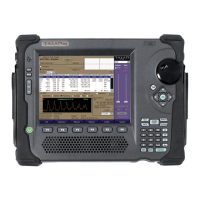MANUAL TEST FUNCTIONS
55
Analyzing 2
nd
and 3
rd
Harmonic Results
In classic NLJD technology that is used for detecting bugging devices, a strong 2nd harmonic is
indication of an electronic device while a strong 3rd harmonic typically indicates a corrosive
false alarm junction. However, when using NLJD technology for looking for taps, you cannot
expect that a strong 3rd harmonic indicates a false corrosive junction. The reason is that many
telephone tap circuits rely on parallel diode limiting circuits. The figure below shows a portion
of a tap circuit that uses a transformer to isolate the tap electronics, a blocking capacitor to
isolate DC voltage (for a parallel tap), and 2 diodes to limit the input to the amplifier circuit.
These 2 diodes in parallel create an NLJD response that results in a strong 3rd harmonic
response.
The next two examples will show responses to this type of tap. In the figure below, there is a
parallel tap installed on an isolated 8 conductor line on pair 4:5. Again, you can see that every
pair with either a 4 or 5 has strong harmonic level (even though 4:5 indicates the strongest
response). It is also important to note that the transmit power is about 70% of maximum
power. The reason that the response is showing up on combinations of either 4 or 5 is that
there is sufficient power to get good response even though only 1 wire of the pair is connected
to the tap device.
To determine the proper pair with the tap, the transmit power is manually decreased until only
the true pair shows an NLJD response.

